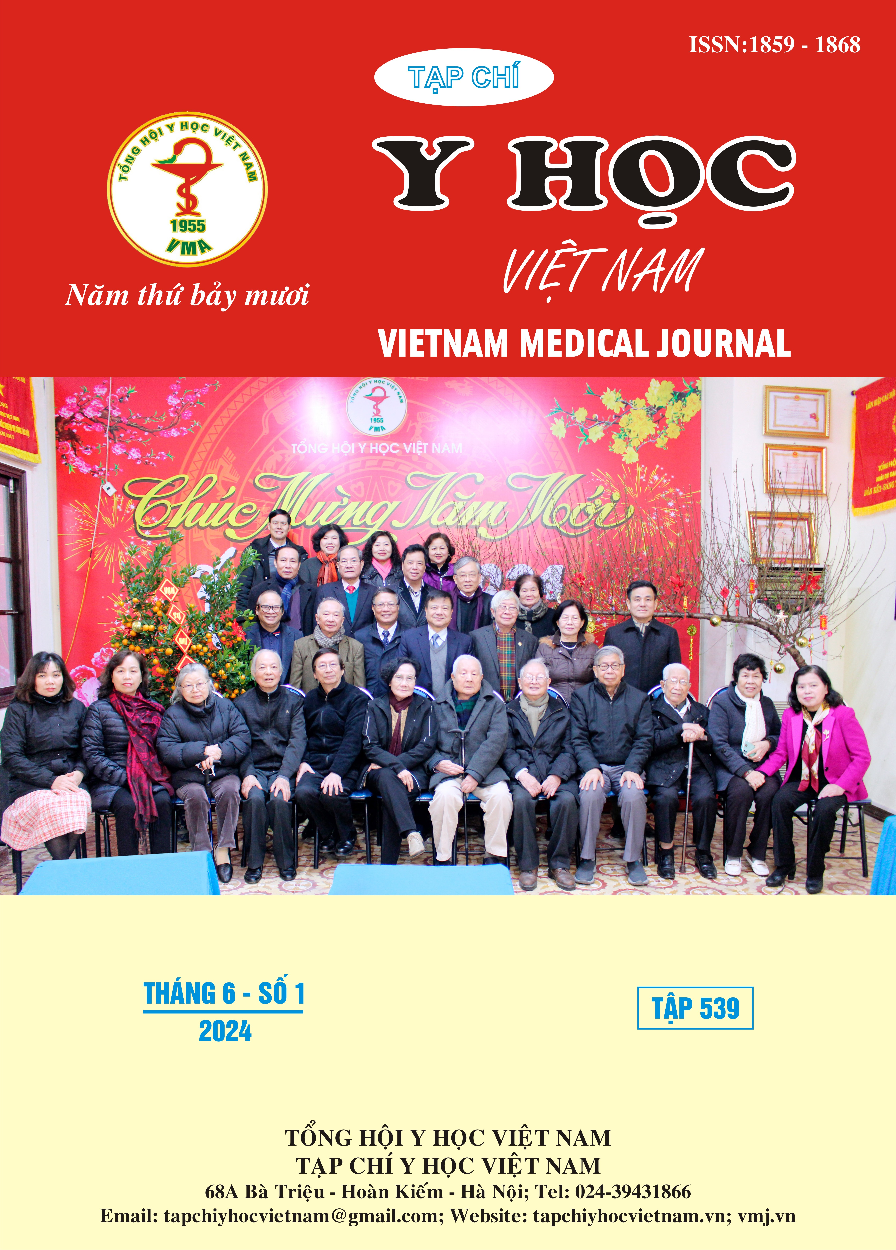RESULTS OF SjVO2 INDEX MEASUREMENT AND SOME PROGNOSTIC FACTORS IN PATIENTS WITH SEVERE BRAIN TRAUMA AT THE SURGICAL INTENSIVE CARE UNIT, NGHE AN GENERAL HOSPITAL
Main Article Content
Abstract
Objective: To describe the results of measuring the SjVO2 index and some prognostic factors in patients with severe traumatic brain injury treated at the Surgical Intensive Care Unit of Nghe An General Friendship Hospital. Subjects and methods: A cross-sectional descriptive study was carried out on 51 patients with severe traumatic brain injury who undergone brain decompression surgery, and were under post-operative treatment at the surgical intensive care unit, Nghe An General Friendship Hospital from October 2022 to June 2023. Results: The average catheter placement time was 17 ± 5 minutes, with 1 case of accidental puncture of the internal carotid artery, accounting for 2%. The proportion of patients whose SjVO2 returned to normal levels (55-75%) after 48 hours of surgery was 66.7%. The proportion of patients with a good GOS score at 1 month after discharge in the group with subarachnoid bleeding was lower than the group without subarachnoid bleeding (20% and 65.9%, respectively, p = 0.017). The proportion of patients with a good GOS score at 1 month after discharge in the group where SjVO2 returned to normal was higher than in the group that did not return to normal (67.6% and 35.3%, respectively, p=0.032). ). Multivariate regression analysis showed that SjVO2 returned to normal progression and subarachnoid bleeding were independent prognostic factors for GOS outcome after 1 month. Conclusion: SjVO2 is a monitoring method with prognostic value in patients with severe traumatic brain injury. SjVO2 has a significant relationship with Glasgow score on admission and GOS after discharge. After brain decompression surgery, the SjVO2 index returns to normal levels, increasing the possibility of better recovery.
Article Details
Keywords
severe traumatic brain injury, SjVO2, Nghe An General Friendship Hospital
References
2. Ralph J, Singh N. Advanced neurological monitoring. Surgery - Oxford International Edition. 2016; 34(2): 94-96. doi:10.1016/ j.mpsur. 2015.11.006
3. Schell RM, Cole DJ. Cerebral Monitoring: Jugular Venous Oximetry. Anesthesia & Analgesia. 2000; 90(3): 559-566. doi:10.1097/00000539-200003000-00012
4. Kidd KC, Criddle L. Using jugular venous catheters in patients with traumatic brain injury. Crit Care Nurse. 2001;21(6):16, 18-22; quiz 24.
5. Lewis SB, Myburgh JA, Reilly PL. Detection of cerebral venous desaturation by continuous jugular bulb oximetry following acute neurotrauma. Anaesth Intensive Care. 1995; 23 (3): 307-314. doi: 10.1177/ 0310057X9502300307
6. Kim JJ, Gean AD. Imaging for the diagnosis and management of traumatic brain injury. Neurotherapeutics. 2011; 8(1):39-53. doi: 10.1007/ s13311-010-0003-3
7. Cormio M, Valadka AB, Robertson CS. Elevated jugular venous oxygen saturation after severe head injury. J Neurosurg. 1999;90(1):9-15. doi:10.3171/jns.1999.90.1.0009
8. Phạm Xuân Hiển (2005). Nghiên cứu vai trò của SjvO2 trong hồi sức bệnh nhân chấn thương sọ não nặng. Luận văn Thạc sĩ Y học. Trường Đại học Y Hà Nội. Hà Nội.


